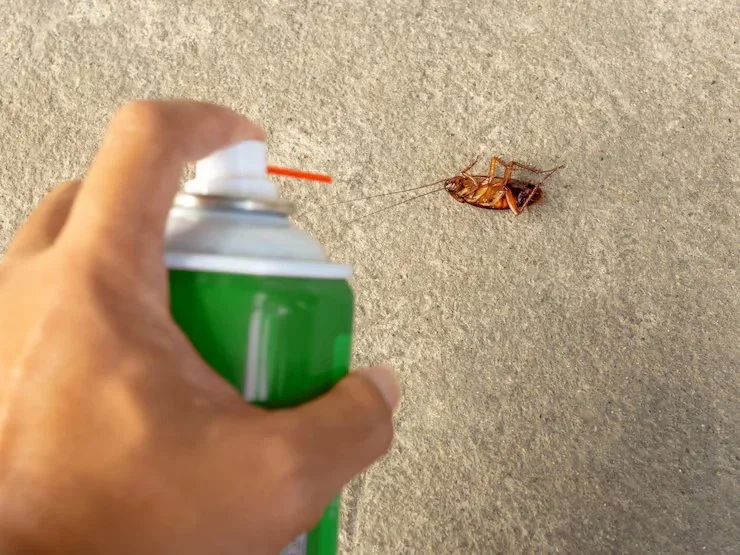
How to Use Non-Chemical Barriers for Pest Control
- 1. Understanding Non-Chemical Barriers for Pest Control
- 2. Benefits of Using Non-Chemical Barriers
- 3. Types of Non-Chemical Barriers for Pest Control
- 4. How to Implement Non-Chemical Barriers Effectively
- 5. Real-Life Examples of Non-Chemical Pest Control
1. Understanding Non-Chemical Barriers for Pest Control
Non-chemical barriers offer a natural and effective way to prevent pests from invading your home without the use of harmful pesticides. These methods are ideal for people looking to protect the environment, their family, and pets from the risks associated with chemical treatments. Non-chemical barriers include physical, mechanical, and natural solutions that create obstacles for pests, making it harder for them to enter or survive in your home.
Non-chemical pest control is especially beneficial for homeowners who prefer eco-friendly alternatives or are dealing with sensitive environments like gardens, kitchens, or areas where children and pets play. In this article, we’ll explore how non-chemical barriers work and how you can implement them in your home for long-term pest control.
2. Benefits of Using Non-Chemical Barriers
There are many advantages to using non-chemical barriers for pest control, making them an attractive choice for eco-conscious homeowners:
- Environmentally Friendly: Non-chemical methods do not introduce harmful chemicals into your environment, reducing pollution and protecting beneficial insects like bees and ladybugs.
- Safe for Family and Pets: Unlike chemical pesticides, which can be harmful to humans and animals, non-chemical barriers are generally safe and non-toxic, making them a great choice for homes with children and pets.
- Long-Term Effectiveness: When implemented correctly, physical barriers like screens or sealants can provide lasting protection against pests, preventing infestations without frequent reapplications of chemicals.
- Cost-Effective: Many non-chemical pest control methods require little investment beyond the initial setup, making them an affordable alternative to expensive chemical treatments and ongoing pest control services.
3. Types of Non-Chemical Barriers for Pest Control
There are several types of non-chemical barriers that can be used to prevent pests from entering your home or garden. Here are some of the most effective options:
- Physical Barriers: These include screens, nets, and fences that physically block pests from entering certain areas. For example, installing mesh screens on windows and doors can prevent insects like flies, mosquitoes, and wasps from getting inside.
- Sealing Cracks and Gaps: Sealing cracks and gaps around doors, windows, and walls is one of the simplest and most effective ways to prevent rodents and insects from entering your home. Caulking and weather stripping can help ensure that your house is tightly sealed against unwanted visitors.
- Natural Barriers: Certain plants and materials naturally repel pests. For example, planting lavender, mint, or citronella around your yard can help keep mosquitoes at bay. Similarly, diatomaceous earth can be sprinkled around the perimeter of your home to create a barrier that kills pests like ants and cockroaches.
- Traps and Barriers: Traps such as sticky boards or rodent cages can serve as a physical barrier by catching pests before they can spread or infest your home. These are particularly effective for controlling rats, mice, and crawling insects.
4. How to Implement Non-Chemical Barriers Effectively
To maximize the effectiveness of non-chemical barriers, it’s important to implement them properly. Here’s how to do so:
- Inspect Your Home: Start by thoroughly inspecting your home for any gaps, cracks, or areas where pests might be entering. This includes checking around windows, doors, vents, and utility lines.
- Install Physical Barriers: Install mesh screens on windows and doors to block flying insects. Use weather stripping and caulk to seal cracks and gaps, especially in areas like basements, attics, and crawl spaces where pests are likely to enter.
- Use Natural Deterrents: Introduce plants that repel pests to your yard and garden. Consider placing lavender or citronella around your patio to keep mosquitoes away. Additionally, use diatomaceous earth or other natural substances around the foundation of your home to deter pests.
- Monitor Regularly: After setting up your barriers, make sure to regularly monitor for any signs of pest activity. This will help you catch any potential infestations early and adjust your barriers as needed.
5. Real-Life Examples of Non-Chemical Pest Control
Many homeowners and gardeners have successfully used non-chemical barriers to keep pests at bay. For instance, a homeowner in California installed fine mesh screens on all their windows and doors to keep out fruit flies and mosquitoes. This simple solution has effectively reduced the number of pests in their home without the need for chemical pesticides.
Another example comes from a community garden where gardeners used diatomaceous earth along the perimeter of the garden beds to deter ants and other crawling pests. Not only did this keep pests away, but it also protected the garden’s pollinators and beneficial insects.
These real-life cases show that non-chemical barriers are not only effective but also safe, eco-friendly, and sustainable solutions for pest control. Whether you’re dealing with insects, rodents, or larger animals, non-chemical methods can help create a safer environment for everyone in your home.
If you’re looking for the best products and tools for non-chemical pest control, visit PestControlHub. We offer a wide range of eco-friendly solutions and expert advice to help you keep your home pest-free without chemicals.








 Wildlife Resolutions4.0 (443 reviews)
Wildlife Resolutions4.0 (443 reviews) Pest Marshals of Toledo5.0 (2 reviews)
Pest Marshals of Toledo5.0 (2 reviews) LS Rodent Proofing & Pest Control Service5.0 (4 reviews)
LS Rodent Proofing & Pest Control Service5.0 (4 reviews) Best Termite & Pest Control4.0 (16 reviews)
Best Termite & Pest Control4.0 (16 reviews) Varment Guard Wildlife Services5.0 (28 reviews)
Varment Guard Wildlife Services5.0 (28 reviews) Pestban Inc4.0 (394 reviews)
Pestban Inc4.0 (394 reviews) How to Use Monitors to Detect Pest Entry: A Comprehensive Guide
How to Use Monitors to Detect Pest Entry: A Comprehensive Guide How to Predict Which Pests Will Invade Next – Smart Pest Forecasting for the U.S.
How to Predict Which Pests Will Invade Next – Smart Pest Forecasting for the U.S. How to Conduct a Pest Risk Assessment at Home – Expert Guide
How to Conduct a Pest Risk Assessment at Home – Expert Guide How to Block Pest Entry Around Deck Joists: Effective Solutions
How to Block Pest Entry Around Deck Joists: Effective Solutions How to Safely Use Fumigation Methods: A Comprehensive Guide for Homeowners
How to Safely Use Fumigation Methods: A Comprehensive Guide for Homeowners Why Pests Are More Active After Rain: Understanding the Link Between Weather and Pest Behavior
Why Pests Are More Active After Rain: Understanding the Link Between Weather and Pest Behavior